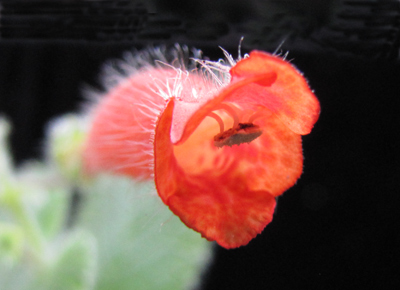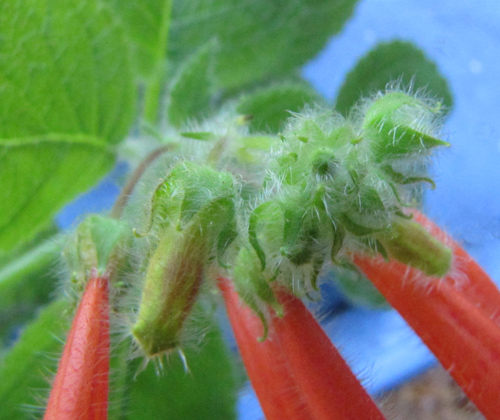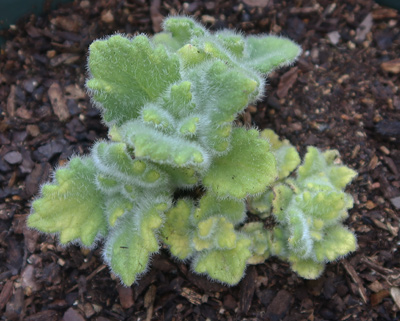Sinningia valsuganensis
A tall, somewhat hairy species.

This species resembles a taller, less hairy version of S. araneosa. Both species are a little tricky horticulturally.
| Species list |
Hybrids list |
Tubers list |
Topics list |
Site index |
What's new |
Home page |
Sinningia valsuganensisA tall, somewhat hairy species. |
|

|
This species resembles a taller, less hairy version of S. araneosa. Both species are a little tricky horticulturally. |
|
I grew this species from seed in the late 1990s, keeping it indoors for a few years. It flowered at least two years. Then one year it did not come back. In June 2011, I sowed seed from Brazil Plants, and got flowers in 2013. These pictures are of a plant from the 2011 sowing. The growth pattern and flowers are similar to Sinningia araneosa, with a much smaller dose of the latter's attractive silvery hairs on the foliage. |

|

|
The flowerbuds have hairy and curly calyx lobes. As seen in the picture at the top of the page, the flowers are hairy and have faint markings. |
|
Under my conditions, this plant emerges from dormancy in May, well after most other sinningias are growing actively and, in some cases, blooming. The tuber is below the soil and not visible during dormancy. My plant is somewhat yellowish when it has just sprouted, but the leaves green up after a few weeks. This plant, in a six-inch pot, sat out in the rain all winter (2018-2019). The picture was taken on 27 May 2019. |

|
| Plant Description |
|
| Growth | Indeterminate |
| Habit | Arching stem(s) |
| Leaves | Green, hairy, sometimes faintly sticky |
| Dormancy | Stems fully deciduous. Dormancy is obligate. |
Flowering |
|
| Inflorescence | extended axis |
| Season | Summer |
| Flower | Red, tubular, about 4 cm long. As in the case of S. araneosa, the two upper lobes of the corolla project further forward than the bottom three lobes do. |
Horticultural aspects |
|
| Hardiness | Came back in 2014 after a winter with a low of 28-30 F. |
| Recommended? | Not much. It is not as attractive as Sinningia araneosa, but easier to keep alive. |
Botany |
|
| Taxonomic group | First core group of the Corytholoma clade. |
| Hybridization | To the best of my knowledge, no hybrids have been made with this species. |
PublicationChautems, 1991. Etymology: valsugana + -ensis ("resident of"). The name refers to the place where this species was found: "Valsugana Velha", in the State of Espírito Santo, near the city of Santa Teresa, in an area of mixed vegetation, including coffee plantations and remnants of forest with some small rocky outcrops [Alain Chautems, personal communication]. External LinkSee information on the valsuganensis page of Mauro Peixoto's web site. |